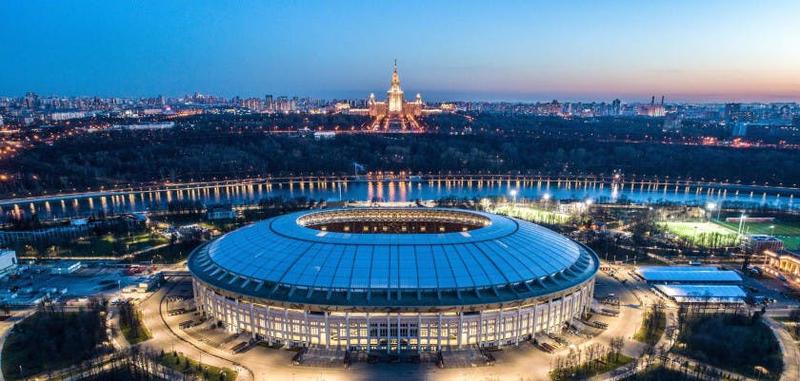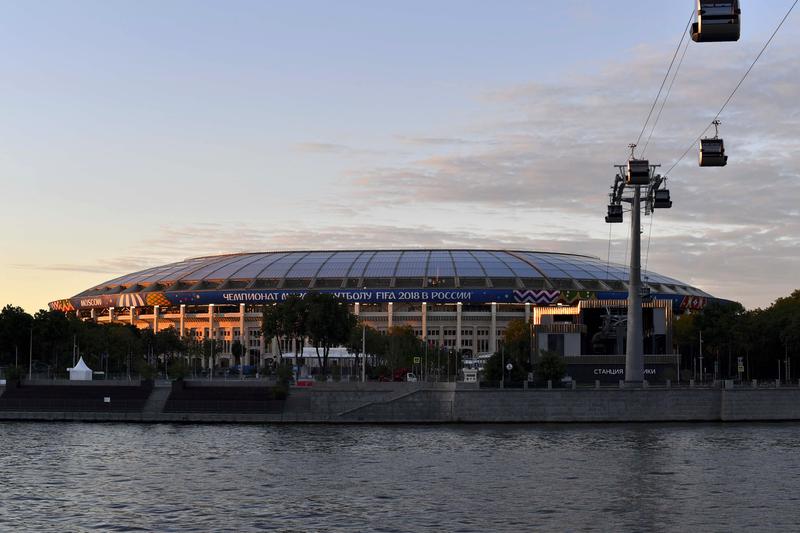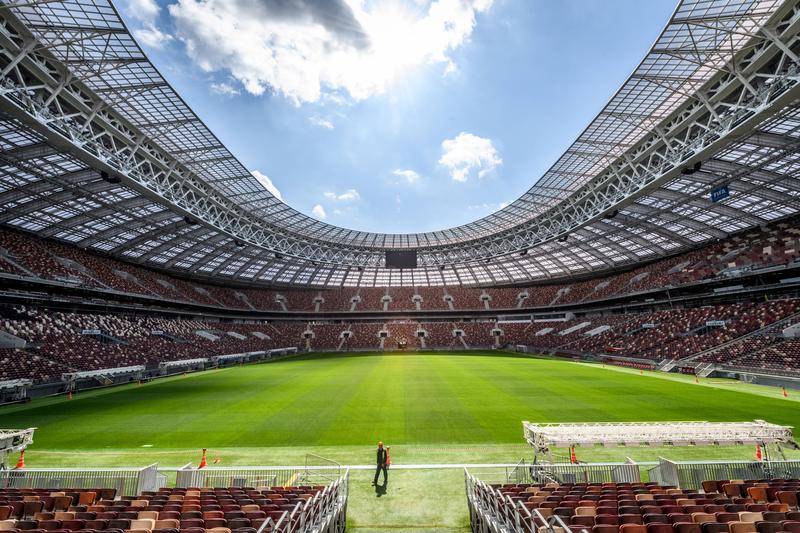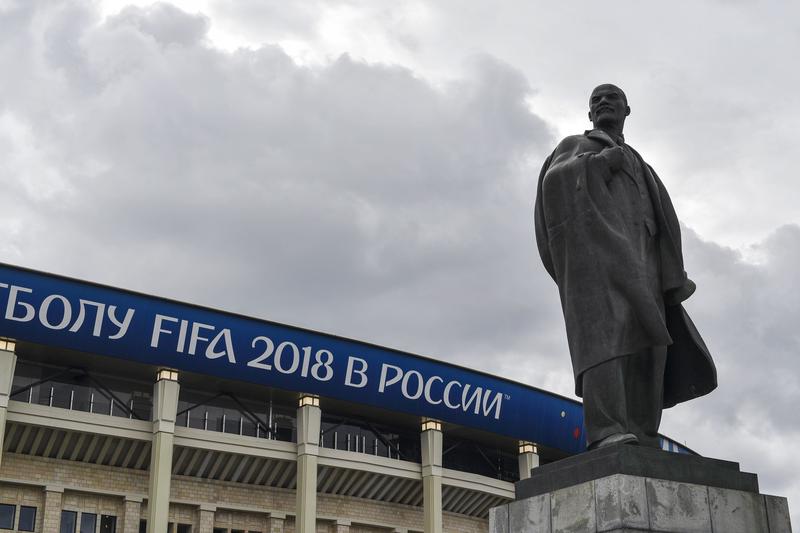The stadium that hosted the opening match, and that will host closing match is a celebration of the architectural heritage of the city of Moscow.
This piece is the third in a series in which we will analyze the most beautiful stadiums of the Russian World Championship.
In case you missed my other 2 posts here is a link:
On the Luzhniki Stadium were played the games:
Russia-Saudi Arabia (Group A), 14 June 2018 - opening match
Germany-Mexico (group F), 17 June 2018
Portugal-Morocco (Group B), 20 June 2018
Denmark-France (Group C), 26 June 2018
Eighth of final Portugal - Uruguay, 1 July 2018
And there will be played the games:
Semifinal 2, July 11, 2018
Final, 15th July 2018

Around the Luzhniki there is a large urban space, made up of squares and tree-lined avenues, which surround the stadium and at the same time elevate it as a celebratory podium. We are in the heart of the Vorobyovy Gory, better known as the Sparrow Hills, a series of hills that mark Moscow's bend on the right side of the Moscow River. Walking among the trees or on the slopes of the meadows, every point of the park invites you to look towards the center, where the Luzhniki Stadium is located.
It is the sublimation of the concept of sports architecture. As dictated by the "monumental" concept of classical buildings, opportunistically taken up by the nationalistic regimes of the 1930s and brought back to a purely sporting idea after the Second World War, the stadium becomes a celebration of the city and, at the same time, is celebrated by the city itself.
The symbol of the Soviet sport
Inaugurated in 1956 after 18 months of work, the "Central" stadium was the gem of a sports citadel that would develop on its sides. The Soviet Union made its debut at the Helsinki Olympic Games in 1952, finishing second in the medals table behind the United States, with 22 gold medals out of a total of 71 medals. Sport, which was also and above all a state affair, and the training of athletes required cutting-edge facilities and the Luzhniki sports complex was the perfect answer.
However, the word "Luzhniki" (which means "meadows, fields" translated from Russian) will only appear after 1992. In his first 36 years of life, the stadium is called "Central Lenin Stadium", dedicated to Vladimir Lenin, father of the revolution of 1917 and the birth of the Soviet Union.

And, in fact, the whole nation contributes to the construction of the stadium. The materials come from all parts of the Soviet Union, be it timber for spectator benches (from Ukraine) or for cladding (from Siberia), or building material (from Armenia and partly from Leningrad) or glass for windows and interior hall furniture (from Latvia and Belarus).
On mainly marshy land very close to the river, 10,000 foundation piles are laid to strengthen the base and raise the stadium by about half a meter above the ground. The ellipse of the system is simple and imposing at the same time. The unique ring of the bleachers embraces the playing field, creating an effect of communion and a very strong community among the fans. The exterior, on the other hand, is marked by the neoclassical style that is used in most of the Soviet architecture. A series of square-based pillars run after each other to vertically mark the curtain wall that runs around the stadium and rises almost eight levels high. High, small windows, in groups of three at a time, are set between pillars. At the base, the low arched openings function as fan access from the outside, recalling the functional choice of the old arenas and the multiplicity of entrances, in contrast to the few selected modern access points.
The new Luzhniki
The verticality sought by the openings and the structural scan is evened out by the grandeur of the stadium even in its horizontal extension (the longest diameter of the ellipse in the plan is about 310 m, almost double the Colosseum in Rome). Dimensions only partly mitigated by the cover, initially added in 1996 and now again proposed in the stadium, renovated for the World Cup.
The current Luzhniki is a reworking, in what is the result of a complete modernization respecting the original character of the plant. The entire bowl of the steps, which had already been modified in the mid-90s seeing its capacity fall compared to the 100,000 seats of the original stadium, was in fact completely demolished. The project signed by the local studios SpeeCH (already active in the new Krasnodar stadium) and Mosinzhproekt (author of much of the infrastructural renovation of the city of Moscow) provided for the maintenance of the entire exterior facade and the reconstruction of the inner stadium.

In what has been an exceptional conscious architectural restoration operation, the neoclassical character of the Luzhniki has been preserved - with the addition of a new outer colonnade, supporting the new roof structure, in complete harmony with the features of the original rear façade. The roof has been extended by 11 m, so as to provide shelter for every spectator, and a ring of 900 m total perimeter has been obtained on top of the steps, to form a walkway with a unique view from the stadium on the city.
The icon of Soviet (first) and Russian (then) sport will then appear renewed at the opening match but carrying with it the signs of its own history. The neoclassical external façade wrapping its structure, in fact, is today as sixty years ago still the distinctive character of the plant.
In the same way, the bricks on the façade and the marble on the base continue to mark the character of the Luzhniki. Images of athletes from all sports decorate the outer covering of the roof, underlining the vocation of the stadium and the sports complex to which it belongs.
Lenin's statue continues to guard the stadium's entrance at the end of the main avenue - the ideal extension of which, on the opposite side and across the river, leads to the extraordinary Moscow University building (one of the "Seven Sisters", the skyscrapers built between 1947 and 1953 in the "Stalinist" style, a reworking of Baroque and Gothic features).

The Luzhniki is a stadium that celebrates national sport but at the same time is also the cornerstone of the urban development of the city of Moscow. At the same time, it is the central point towards which all the avenues of the Sparrow Hills park converge and the fundamental element in the development of an ideal axis leading to the University building, in a theoretical thrust that recalls Baron Haussmann's ideas of urban vision that upset the centre of Paris in the mid-nineteenth century.
As Vasily Polikarpov, one of the architects responsible for the construction of the Luzhniki in 1956, wrote in his book "Cetralnyi Stadium" (The largest stadium in the country): "I was sitting on a parapet, surrounded by trees. I already saw in front of me the playgrounds, the swimming pools, the future stadium. I could hear the start of the game, the sound of the water after the dives, the sound of the kicks given to the ball. I took out my notebook to draw a sketch of what the new stadium would look like. At one point someone knocked me on the shoulder and said proudly, "Do you know? A city will be built here. And I exclaimed with enthusiasm: "Sure! And what a city... a city of sport!"
Comments